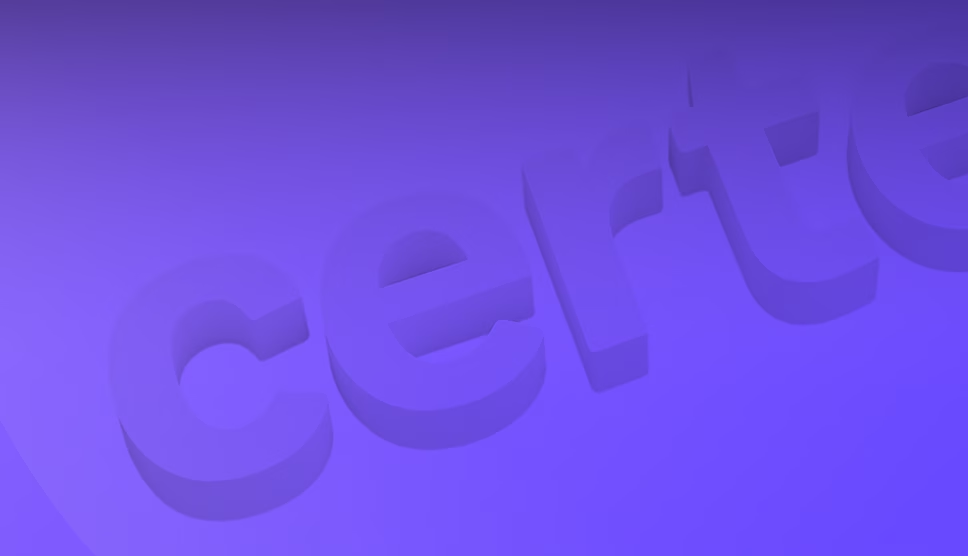The cost of poor visibility isn’t always obvious.. until it is.
An organisation believed their environment was fully covered. The discovery tool was running. Reports looked clean. Then a software audit revealed a handful of devices and software no one could explain. No record. No classification. No alerts. They weren’t threats, but they were gaps. And that was enough to shake confidence across the board.
Scenarios like this are more common than many CIO’s would believe. But when you’ve been in the business of defending against software vendor audits for nearly 20years as Certero has, you become acutely aware how risky gaps can be. As infrastructures evolve, so does the risk of falling behind.
Understand the value of good data
It’s all too easy to get drawn-in to a good UI or the seeming simplicity of ITAM tools that have straight-out-of-the-box workflows guiding you to manage your environment. Whilst a strong UI that empowers users to make safe decisions is essential, it’s also key to recognise whether the data within those systems are actually valuable. Poor data within an automated or overly-simplified system can accelerate risk.
Understand the difference between MDM and IT Asset Management
There’s no question that the ways in which end-user devices are administered has evolved, with MDM solutions like Microsoft’s Intune becoming a simplified way to support enrolled Windows computers and not just mobiles.
Whilst valuable for supporting individual devices through ‘active’ parts of the hardware and software lifecycle, it’s important to understand that administering already known, enrolled devices is not the same as discovering systems or managing risks and costs of hardware and software throughout the entire asset lifecycle and at volume.
Static discovery no longer fits dynamic environments
Legacy tools offer point-in-time visibility. But the pace of change today is real-time. Teams face issues, like assets appearing and disappearing unnoticed; late alerts; manual time-consuming tasks; multiple tools giving different pictures and causing confusion. And the list goes on. The result is a layer of noise, and more worryingly, a false sense of security.
Acknowledge discovery as part of your strategy
Are mergers and acquisitions a key part of your business strategy? If so, having an efficient way to fully discover and assess risks across new environments should be high on the list. The faster you can understand hardware and software, the faster it can be brought into your policies, governed, secured, made valuable and controlled.
A smarter approach to asset discovery
To close the gaps, IT leaders should instead prioritise tools that:
- Automatically discover changes across your environment. Your ITAM tools should inform you what to manage, not vice versa.
- Identify and classify rogue assets, so you can easily assess risk and prioritise.
- Track changes in real-time, instead of relying on delayed scans.
- Deploy with minimal effort, speeding up time-to-value.
- Deliver audit-ready visibility with verified data that can stand up to audit scrutiny.
- Does this look like a dream? This is the baseline for today.
Making the shift.
Here are FOUR steps to review and refine your current IT Asset Management tooling:
- Check What’s Being Missed
Run a gap analysis between real-time asset appearances and your existing discovery logs. Look for devices that appeared and vanished without detection. This highlights areas where your current tool falls short. - Review Classification Processes
Examine how your current system categorises new or unknown devices. If your team spends time manually identifying and tagging assets, it’s a sign that automation is lacking. Automating classification not only saves time but also reduces human error. - Move to Continuous Discovery
Evaluate tools that support event-driven or continuous scanning. These platforms detect assets as they connect, disconnect, or change, eliminating the blind spots left by scheduled scans. Continuous visibility ensures you’re not reacting to changes days or weeks after they happen. - Strengthen Audit Support
Audit requirements demand not just accuracy, but clarity. Ensure your discovery solution offers exportable, timestamped records and rich context for every asset. Ideally, use a vendor-verified tool. This makes compliance smoother and helps demonstrate control during regulatory reviews.
Visibility isn’t a checkbox – it’s a capability.
When asset discovery keeps pace with your environment, everything gets easier: security, compliance, daily operations, and maybe, just maybe, your nightly sleep too.
If your current tool doesn’t offer this level of insight, it might be time to explore a better way.

Scott Massey – Customer Relationship Manager
Scott is one of Certero’s earliest team members and a long-time expert in IT Asset Management, Software Asset Management, and FinOps. With over 16 years of hands-on experience helping organisations navigate audits, gain control of their environments, and improve visibility, Scott brings a practical, real-world perspective to solving discovery challenges in modern IT.
Certero was built for environments like yours – fast-moving, high-stakes, and compliance-driven. With intelligent discovery and real-time visibility at its core, it’s designed to simplify your work, support your audits, and help you sleep a little easier at night.












